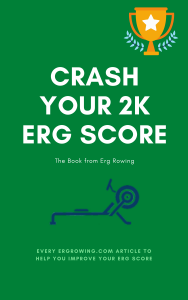Did you know that there are 1000’s of things that you can do to make yourself a better rower – starting right now. And almost all of them are non rowing tasks.
Changing habits are hard. And the bad news is that this tip requires you to change one of your habits.
But first:
I Have a (non Rowing) Question for You…
Where are you sitting right now? Are you at a desk – crouching down looking at these very words on your monitor? Or maybe you’re on the couch at home slouching down flicking through your ipad? Or are you on a bus or train, on your way to work reading this on your phone?
You could be anywhere reading this.
Wherever you are and whatever device you are reading this article on, I want you to think about one thing – right now.
Just one simple thing.
And when you think of it, I want you to do something immediately afterwards.
Ready?
Your posture.
How is your posture?
Are you sitting correctly?
Or, are you slouching down with a curved back, tense shoulders and protruding chin?
If it’s the last one – change it right now. Make yourself sit correctly so that you are maintaining your back and spine in a good neutral position.
How to correct it:
Uncurl your back, rotate your pelvis and sit on the bones of your ass. That’s the same bones that stick down those 2 holes in your seat as you are rowing in the boat. And same bones that sit on the seat of the erg (and somehow always get really sore after a really long erg session).
But What Has All This Got to do With Rowing?
And more specifically, helping you to row faster?
Well let me show you by telling you a short story. I heard this once a couple of years back and was amazed by its simple brilliance. At the time Peter Haning was coaching some rowing crews.
Haning was 3 times World Champion in the Lightweight Men’s Single Scull from 1993 – 1995. In some ways he was ahead of his time because he rowed with a particular style and technique that is not unlike the current rowing styles and techniques. Most notably was his flat back and upright body position.
But though he rowed upright with a flat back he still got a great dynamic body action with lots of length generated from swinging his body both forward and back.
I don’t know if it was by accident or design that he rowed this way, but the fact is that it was great to watch.
And deadly effective.
Anyway – back to my story. When he was coaching, he once subtly corrected a rower who was on a public computer on a hotel lobby checking his email. Very courteously and helpfully he motioned to the guy to sit up a little. To correct his posture from the slouching position he was in.
Before you say anything – this wasn’t a case of Haning getting involved in something that was none of his business (even though the rower was not one of his athletes). This was a guy who had seen this rower actually row out on the water and saw his limiting problem.
And like all good coaches he took his opportunity to impart his knowledge freely and helpfully – in the right context.
The rowers problem was a pronounced curved back. This curved back was – with time – making him inefficient and have some of the following adverse problems:
- Weak finishes of his rowing stroke
- Tired a lot especially towards the end of races
- A generally a poor performer into strong headwinds
- Have thoracic back tightness (which lead to injury threats)
- On more than one occasion in a rowing race had difficulty breathing (his chest was constricted with the curve)
You would think that this guy should have been able to solve this problem, long before Haining came along. Especially since he was getting intensive (and good) coaching from his university rowing coach. But no matter how hard he tried in the boat to correct his problem, he still reverted back to his old habit when he was under pressure.
That is until the day he got a subtle bomb dropped on him by a 3 time world champion. Who showed (and fixed) him his problem for him in 10 seconds.
You see, it was not about his posture in the boat that was the major cause – it was about his posture out of the boat.
So Remember This:
Sit up and be aware of your posture until you have created a new (good) habit. And you will go a long way towards avoiding some of the problems this guy had with his rowing technique.
[mc4wp_form]


